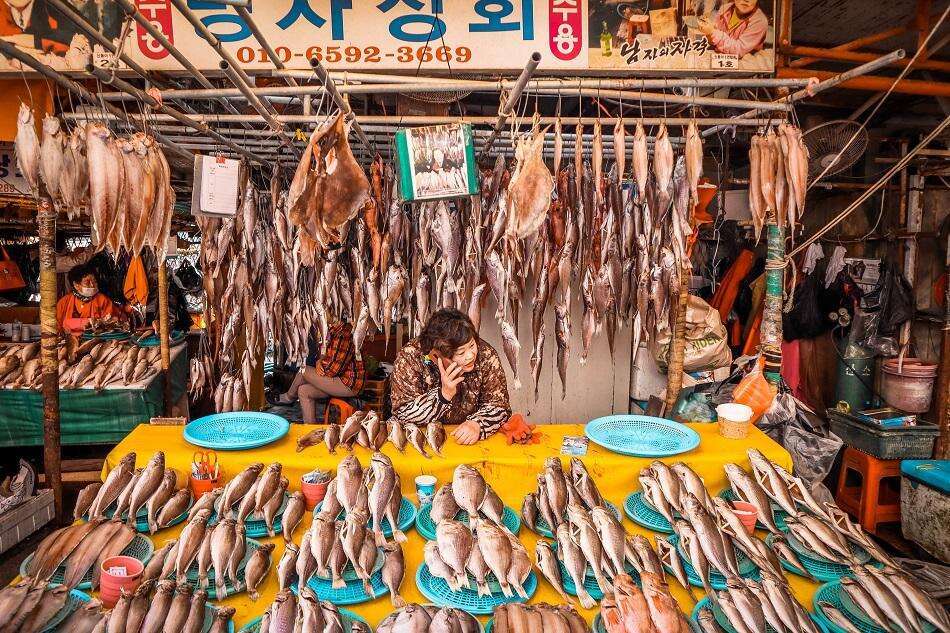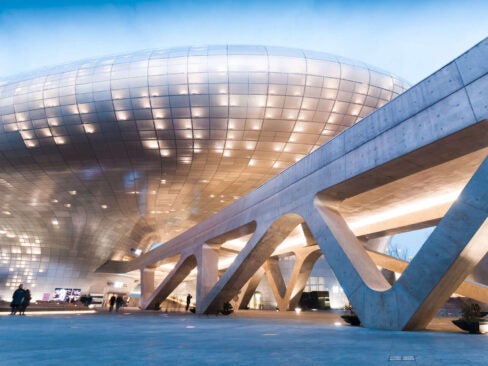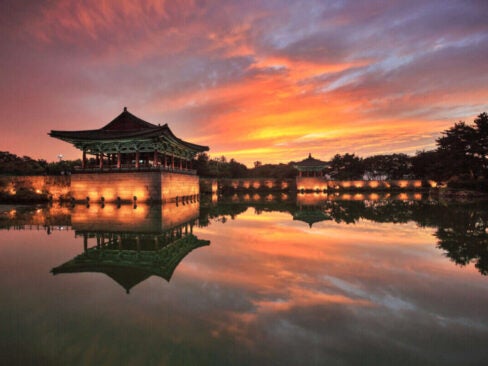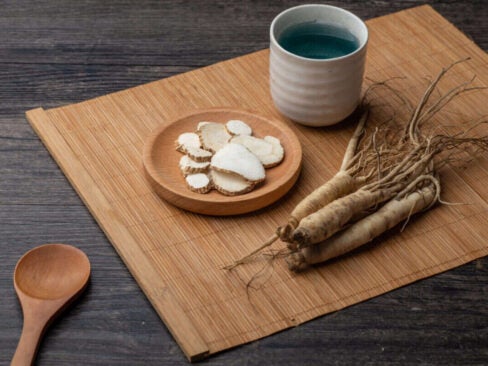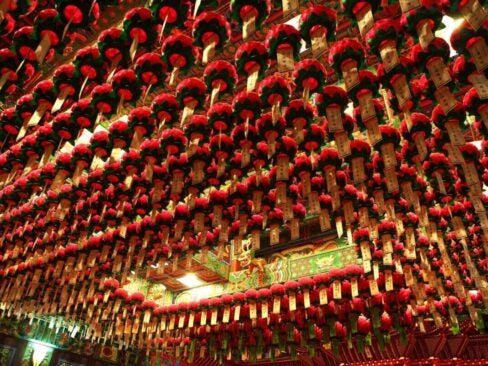When it comes to Korean cuisine, one thing is certain: you’ll never be short of choice. From kimchi to bibimbap, crispy fried chicken to traditional barbeque beef, countless dishes have helped place South Korea firmly on the culinary map as a top global destination for food lovers.
And while Seoul boasts an eclectic mix of unforgettable high-end dining and world-class street food, for those willing to venture beyond the dynamic capital, there is so much more to discover.
“To really capture the variety and color of Korean cuisine, it’s important to visit the coast, the mountains and the agricultural areas,” says Andrew Evans, TV host and travel writer at National Geographic. “Korean food is centered on local produce, so traveling outside the capital gives you a whole new set of ingredients. I especially love the dining scene in Busan, which centers on fresh seafood caught along the beautiful coastline.”
This rich and diverse geography has produced an array of truly unique regional culinary experiences. For those eager to explore, Intrepid Travel’s Seven-night Real Adventure Tour includes a visit to Busan’s bustling seafood market before sampling fresh clams at an oceanfront restaurant; a temple stay complete with a vegan dinner and chanting meditation in Gyeongju; and a culinary master class in kimchi and hangwa (sugar cookies) in Jeonju.
Here, we share the best Korean cuisine and where to find it from Seoul and beyond.
Seoul
Before arriving in the capital to film an episode of his Netflix show Somebody Feed Phil, television writer and producer, Philip Rosenthal, already had a penchant for Korean barbeque. “The best I ever had was at Chung Mi Shim,” he says. “The quality of the meat and all the banchan is fantastic, as is the flavor from that real charcoal grill. It felt like there was such care and dedication to make sure every bite was delicious!”
Located in Cheongdam-dong, the hanu (native Korean beef) restaurant is well worth a visit. The city’s abundance of street food is also not to be missed. Visit Gwangjang Market, one of the oldest traditional markets in South Korea – a labyrinth of over 5,000 stalls. Look out for Tteokbokki (stir-fried spicy rice cakes), Pajeon (distinctive spring onion pancakes stuffed with seafood or pork) and Nokdujeon (nutritious savory pancakes made from ground mung beans).
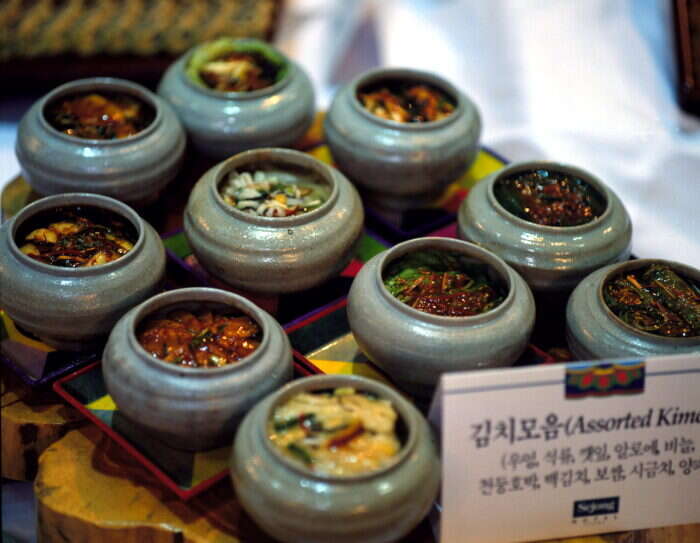
Jeonju
Translating literally as ‘Perfect Region’, it’s worth taking a trip to Jeonju (around two hours on the bullet train from Seoul) in the country’s southwest. Regarded by many as the food capital of South Korea, the city is renowned for its gastronomy. Stroll through Jeonju Hanok village, an area filled with traditional ‘hanok’ style buildings, food stalls and craft shops. As the birthplace of bibimbap, be sure to have a bowl of the crowd-pleasing rice-based dish. Among the best spots in town for an authentic Jeonju version is Hankookjib, a favorite dining spot of many prominent figures including former presidents of Korea. Other menu highlights include sagol gomtang (beef bone soup), and samgyetang (ginseng chicken soup). Then head to Makgeolli, the Korean rice wine district, where the famous beverage is generously served in large copper kettles, alongside plenty of side dishes.
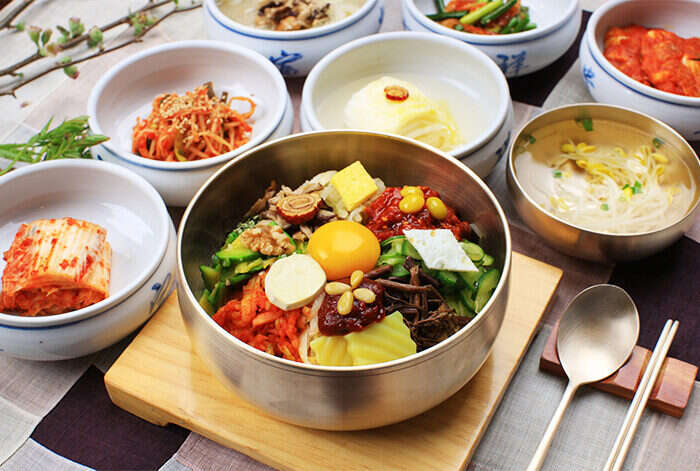
Jeju Island
South Korea’s largest island, Jeju, has been dubbed the ‘Hawaii of Korea’ thanks to its white sandy beaches, waterfalls and lush mountains. In 2007, it was designated a Unesco World Heritage Site due to its well-preserved system of lava tubes and diverse volcanic landforms. But the popular tourist destination is also known for its unique specialty dishes. The island is home to the Jeju native black pig. Traditionally, the prized pork is smoked in thick pieces over burning hay giving it a distinctive flavor and chewy texture. To taste it for yourself, visit Jeju Gomjip, a grill restaurant in Seogwipo-Si, the island’s second largest city in the southern district. Other culinary highlights to look out for include Umu pudding, a special dessert made from red algae, harvested by haenyeo, the female divers of Jeju.

Andong
Located in the mountainous region of central South Korea, Andong is known for its careful preservation of ancient cultural traditions. From visiting the 16th century Hahoe Folk village to attending the annual Mask Dance Festival, there’s plenty of ways to immerse yourself in the city’s culture and history. Of course, one way to do this is by sampling Andong’s traditional culinary specialties. Top of the list is Andong-jjimdak, which translates as ‘steamed chicken of Andong’. Head to the Andong-jjimdak Alley to enjoy this popular dish made from braised chicken and vegetables marinated in Korean soy sauce, mixed with glass noodles. And be sure to try gan-godeungeo (salted mackerel), a local delicacy caught downstream in the Nakdong River, grilled and best served with a bowl of white rice.
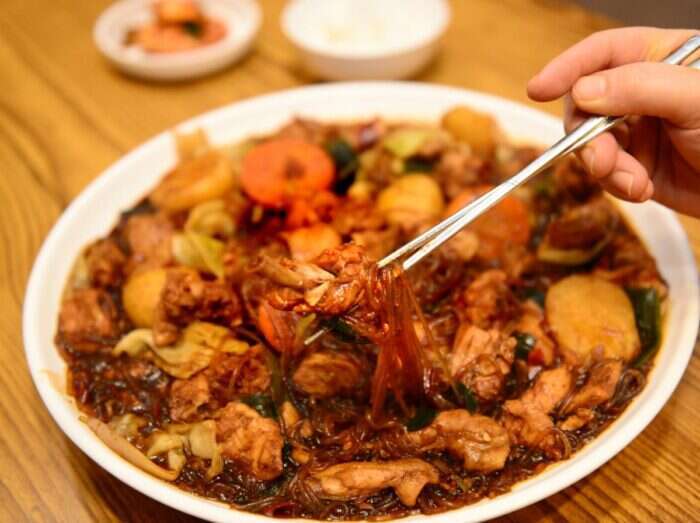
Busan
South Korea’s second biggest city, Busan, boasts natural hot springs, historic temples and trendy art districts. Most exciting for foodies, though, is the port city’s celebrated seafood. Head straight to Jagalchi – Korea’s largest fish market – located on a shoreside road in Jung-gu. Inside you’ll find the live seafood section with everything from eels to crabs, while the dried seafood, prepared fish and shellfish are outside. You can purchase fresh, live seafood and take it upstairs to the restaurants to have it cooked, or visit the food stalls and choose from a multitude of dishes including fish soup, seafood stew, and fried fish. On the second floor, you’ll find Busan’s specialty hoe (Korean sliced raw fish) typically enjoyed with soy sauce, wasabi and gochujang (a hot red-chili paste).
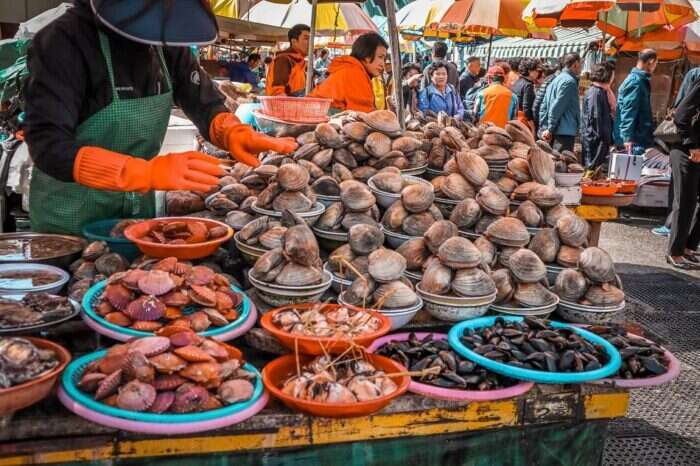
Gyeongju
This coastal city, in the southeastern corner of North Gyeongsang Province, was the capital of the ancient Silia dynasty, which ruled the Korean peninsula for almost 1,000 years, from 57 BC to 935 AD. And while the city’s tombs, temples and historic ruins draw in millions of visitors each year, Gyeongju is also home to an array of culinary delights. Consider visiting Yosokkoong, a 300-year old restaurant in Gyochon village named after Silla King Muyeol’s daughter, Princess Yoseok. The eatery is run by the Choi family, who settled on the site of Princess Yoseok’s house during the Joseon dynasty. It’s an ideal spot for trying hanjeongsik – a traditional Korean full-course meal with an array of buchan (savory side dishes). All of the food is made with fresh, organic ingredients, drawing on special family recipes handed down over 12 generations. Highlights include yak sun joo (home-made rice alcohol), soo ran chae (a pine nut soup with seafood) and yook po (quality Korean beef jerky).
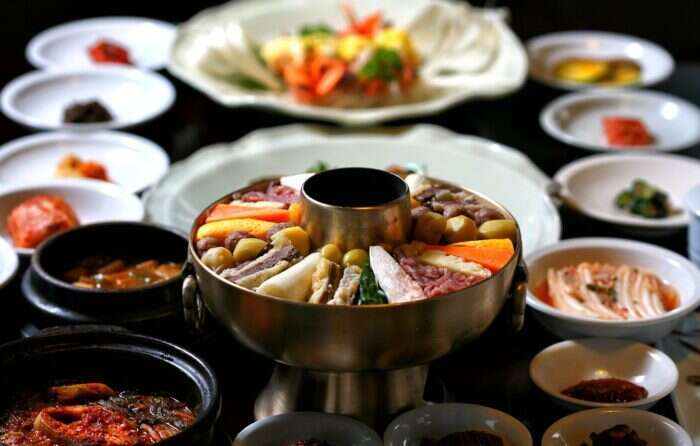
For more information on the best restaurants in South Korea, visit the Korea Tourism Organization






